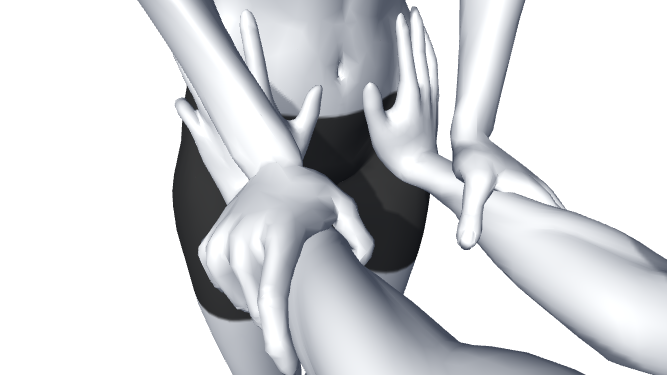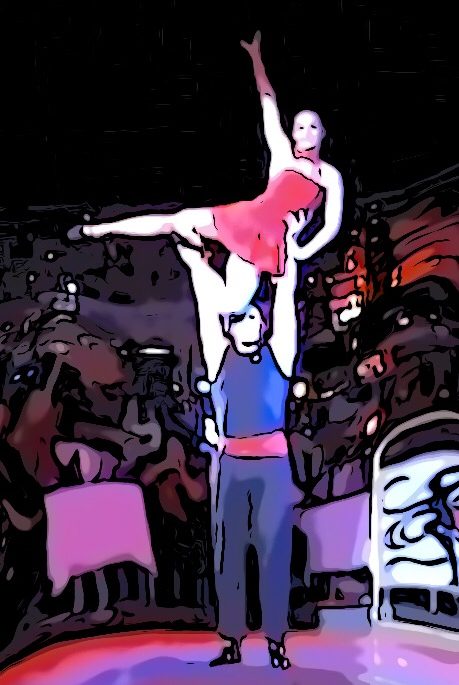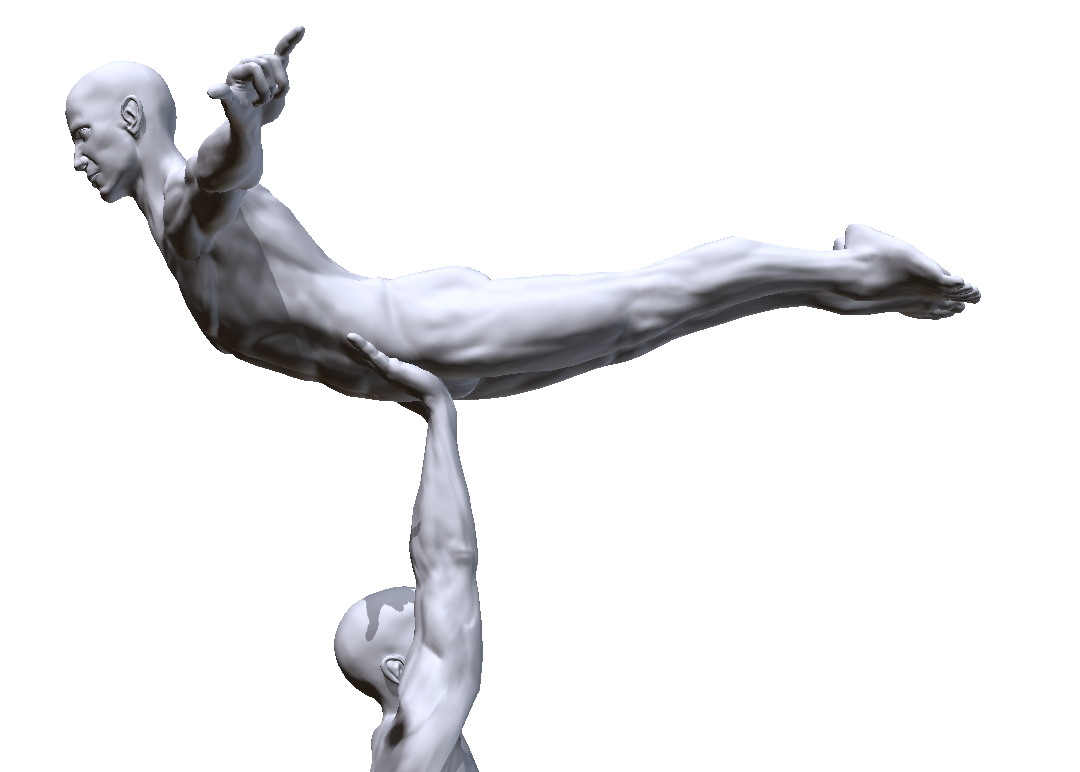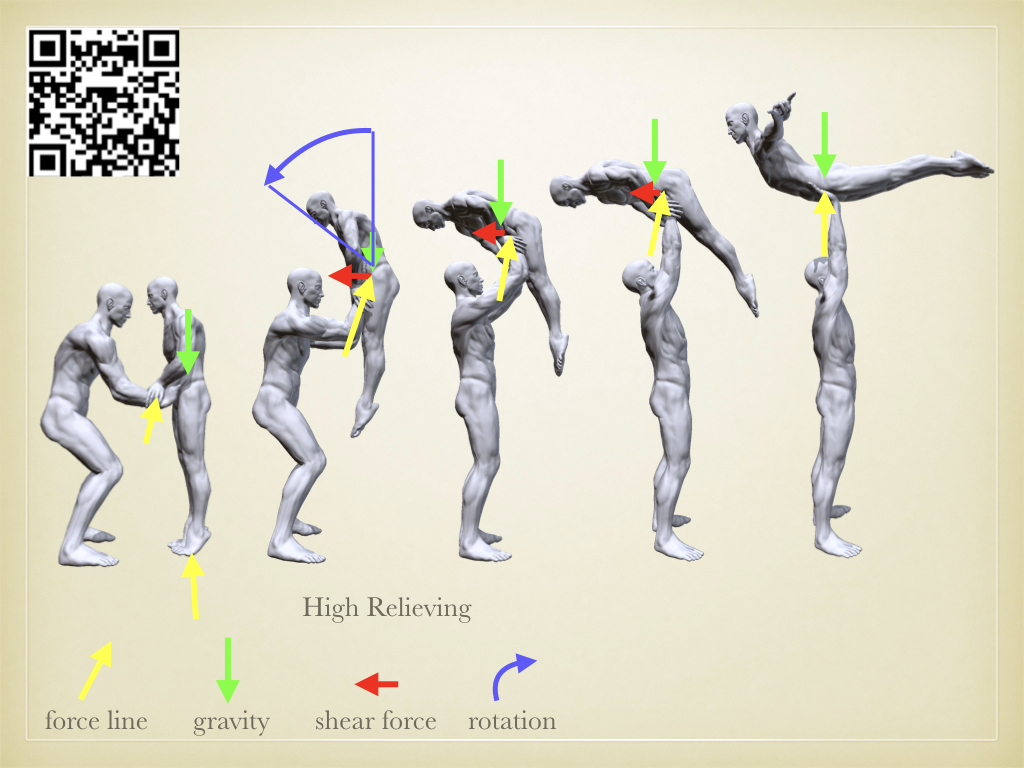The high belly flyer is one of the first figures of the standing base onto the straight arms. As soon as a beginner manages this trick as a base, he rises to the status of an advanced 😉 Although this trick should be feasible even with pure power, I’ve already seen body builders failing with a 60 kg flyer, though they lifted 120 kg while lying and still 80 kg while standing. So what’s so special about this trick?
On the one hand, he became a cult in 1987 by Patrick Swayze in “Dirty Dancing”. At that time every young lady dreamed of being carried in the belly flyer. At this time a trick onto the straight arms was still sensational. The acrobatics in the leisure sector had stuck still in its infancy (comparable to the evolution of the ballroom dancing).
On the other hand, it is necessary for the base to learn the technique of a weightlifter. Without this basic knowledge, the flyer on the half way up becomes at most sensationally heavy and lands on the head of the base. Every weightlifter learns these techniques for snatching…
- the right line of force of the arms (to get under the weight with your own center of gravity) and
- the high relieving, without which a transfer (from pulling to pushing) is not possible.
Just so that no false impression arises here. A base really does not need much power to get a lighter flyer on the straight arms! After all, the World Champions bring (depending on the weight class) twice to 3 times their own weight directly onto the straight arms and the weight rarely jumps like a flyer 😉 However, an inexperienced flyer can make life very difficult for the base.
Starting position:
Base and flyer face each other. The base places his hands above the flyers hip bones. They point upwards with the tips of the index and middle fingers. The flyer grips the bases forearms close to the wrists and fixes whose hands on his hip.

After the start (down-high or high-down-high), the flyer actively jumps off the ground and simultaneously props on the forearms of the base. Attention Bases: To avoid knee problems, make sure that your knees do not get before your toe tips during the squat!
Picture 1: The base can not push up in this phase (before the high relieving) and will strengthen instead the line of force through the hands of the flyer. The base starts only after the flyer made his active jump, making it easier to get under whose center of gravity. Unfortunately, the analogy with the weightlifter does not fit anymore! The weightlifter is at the beginning with his center of gravity exactly above the weight and dives during the high relieving below it. The base uses instead of the pulling phase of the weightlifter the jump of the flyer.
Picture 2: As soon as the flyer slows down after the jump, he is in the high relieving. He initiates a forward rotation by shortening his belly. The thighs remain under the hip. If he actively attracts them, an undesirable impulse arises in the direction of the backflip. If he pushes them backwards, he stops prematurely the high relieving, what will result into the buckling of the arms of the base.
Picture 3: As the flyer rotates forward, the base changes his grip. The course of the line of force shifts from his forearms to his hands. The shearing forces used by the base, to get under the center of gravity of the flyer. If the flyer brakes in this phase, he forces the base to unwanted forward steps.
Picture 4: In the last phase of the rotation, the flyer tips to the horizontal. This requires from him no additional action, but only a conscious letting go.
Picture 5: As soon as the center of gravity over the base comes to a stop, the flyer starts to straighten up, while
- he releases the forearms of the base, and
- he opens up his upper body and the legs at the same time like an umbrella.
The base opens his shoulder while keeping eye contact to the flyer’s legs. Only when those have arrived in the final position, the whole position is safe.
Safety assistance:
- Inexperienced flyers can panic at the moment of letting go.
- An inexperienced base will eventually misjudge the shear forces and run too early under the flyer.
In both cases, the assistance behind the base is recommended. In case of doubt, she grabs at the upper arm of the flyer. Attention: panicking flyers also tend to grab towards the helper!
Deutsch


